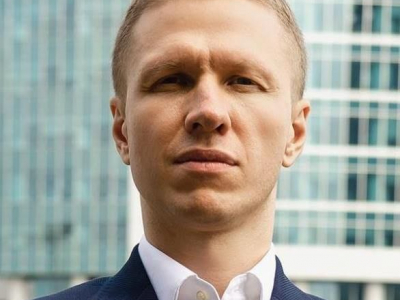There are not too many places around the world where a successful mining facility can be built. From China to Iceland to the Pacific Northwest, CoinFox chooses the best spot to dig for bitcoins.
The backbone of bitcoin is its mining community. They ensure transactions with old bitcoins and create new ones. They are going to have the final word in the block size debate. Unfortunately, they rarely make headlines. One of the reasons is that they prefer to keep silent: most bitcoin miners are not interested in self-advertising. Recently a BitcoinTalk user was encouraging others to visit Switzerland’s biggest mining farm reportedly located in Glarus. When asked about their website, he answered: “They don't have one. Why would a mining farm need a website? They aren't selling anything to end users. But you can believe me, it exists.”
It is difficult to imagine something wispier than digital currency. However, bitcoins are not made of thin air. People who visit bitcoin mining facilities often located in sparsely populated areas are usually amazed to see warehouse buildings with thousands of mining racks in the middle of nowhere.
At first, bitcoin mining was a home industry done by means of personal computers. However, it became unprofitable with the advent of centralised bitcoin mining facilities, which made computation difficulty rise exponentially. Today, the amount of bitcoin you can earn using a home PC would be dwarfed by the electricity bill. That is why cryptocurrency miners all over the world look for the places with the cheapest electricity possible.
First great mines in China worked on coal: in north-western arid regions where they were built, it was cheap and abundant. Other mines used solar energy. For its proponents mining satellites were proposed where the computers would be “closer to the sun and would get sunlight 24/7.” But finally, it was discovered that in terms of cost efficiency no other source of energy can compete with hydropower. To make the best of it, bitcoin mines should be located close to water.
However, to have cheap electricity is not enough. As mining rigs generate plenty of heat, the cooling issue becomes critical. The easiest solution is to deploy the equipment in cold areas. Other important things to consider would include clean environment, quality hardware, convenient logistics and low labour cost.
It is not always easy to get these elements together. For instance, colder countries tend to have more expensive workforce. So every bitcoin mining company chooses its own priorities. Many of them, for instance, buy second-hand hardware and milk it for all its worth because new gear can be hideously expensive.
While the first 50 bitcoins were probably mined in the UK or Japan (only Satoshi Nakamoto knows the truth), nowadays these countries have no place in industrial bitcoin mining. Today the world’s centre for cracking out bitcoin blocks is China. And the three largest mining pools – Antpool, F2Pool and BTCC Pool – are Chinese.
Many Chinese bitcoin mines are located in mountainous regions of Tibet and Sichuan, where the climate is favourable and hydropower cheap, especially during the raining season. A system of informal relations between Chinese businessmen, power plant owners and officials, known as guanxi, helps miners to get the best possible deals on electricity cost. During the summer, Chinese bitcoin computers are often cooled with huge fans. Sometimes, water is used not only as a source of electricity but also as a cooling agent.
Chinese bitcoin mines have been discussed in detail by Motherboard, CoinTelegraph, Bitcoin Talk and Bitcoin Magazine. They are so numerous that, according to Mike Hearn, it creates a problem for the bitcoin network. In his famous letter proclaiming the failure of the cryptocurrency, he blamed the Great Chinese Firewall for slowing down the network. However, fortunately, not all bitcoin mining speaks Chinese.
The fourth largest bitcoin mining pool, BitFury, built a huge datacentre in the capital of Georgia (the country, not the state). In this South Caucasus republic, electricity is cheap and the labour market is highly competitive. Georgian climate is very warm and humid but BitFury, together with Allied Control, developed a complex immersion cooling system for its mining facilities.
After all, some miners can find a suitable place even in hotter countries, such as Thailand and Malaysia. It has recently been reported that the first African bitcoin mine was created in Ghana. Bitcoin mining is well developed in Venezuela where, thanks to governmental subsidies, they have “the cheapest electricity bill on the planet.” There, according to Bitcoin Magazine, “a person mining bitcoins with old equipment at home makes more money than an engineer working 160 hours a month.”
While Europe is no longer the leader of the industry, it still has two relatively important mining pools, Czech Slush (the oldest one, which claimed its first block back in 2010) and Swedish KnCMiner. The largest European mines are located in the Nordic lands enjoying cheap and accessible hydropower and cold climate, namely, in Northern Sweden and Iceland. A Genesis Mining facility in Iceland became famous when three livestreams were launched showing daily life at a bitcoin mine in Iceland in real time. However, many investors would look elsewhere because Iceland is too remote and rent and labour costs there are high.
In North America, the most popular region is the Pacific Northwest, more precisely Chelan County in Washington. Three dams on the Columbia River provide the cheapest electricity in the US. However, the massive invasion of bitcoin miners in the county did not please locals at all because the rigs consume too much power. In fact, Chelan County is planning to raise electricity price for miners from 3 to 5 cents per kilowatt-hour. If it happens, the miners have a fair chance to start losing profit and end up bankrupts. They believe the decision is unjust because their business vastly contributes to the development of the county, bringing tax money and creating working places.
Technical competition between mining companies has been compared to an arms race. But they face another great risk when the infamous bitcoin volatility comes in. If the cryptocurrency becomes too cheap, mining would not cover production costs. Bitcoin price will matter even more by the end of the year because in July 2016 bitcoin reward will be halved, going down from 25 BTC to 12.50 BTC for a block.
As a way to cut costs and optimise expenses, new energy efficient chips are implemented in last-generation mining processors, and research and development of even better solutions carry on. Despite that, some environmentalists are seriously concerned that, if bitcoin price goes up, mining would become too profitable and thence detrimental for the planet. According to the Australian think tank Long Future Foundation, “if Bitcoin’s energy consumption isn’t reined in, we’ll end up being crowded out of electricity networks and sitting in the dark.”
Alexey Tereshchenko

















